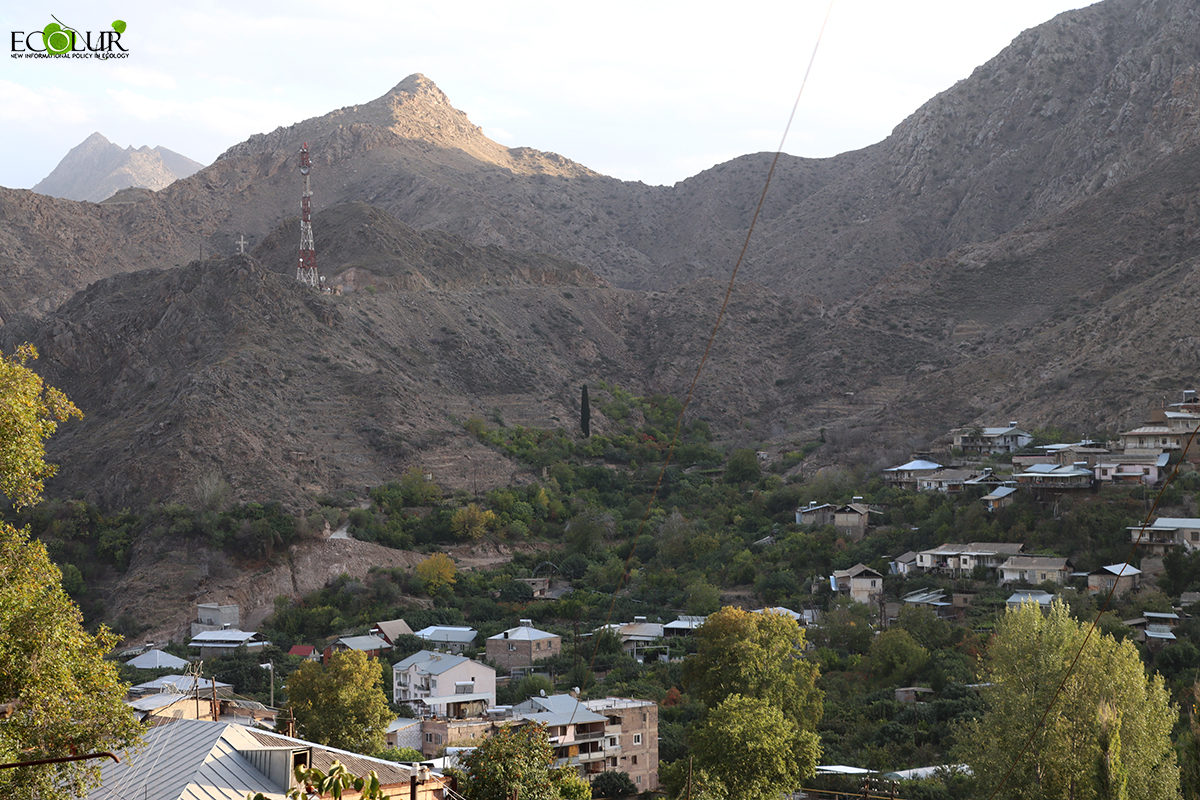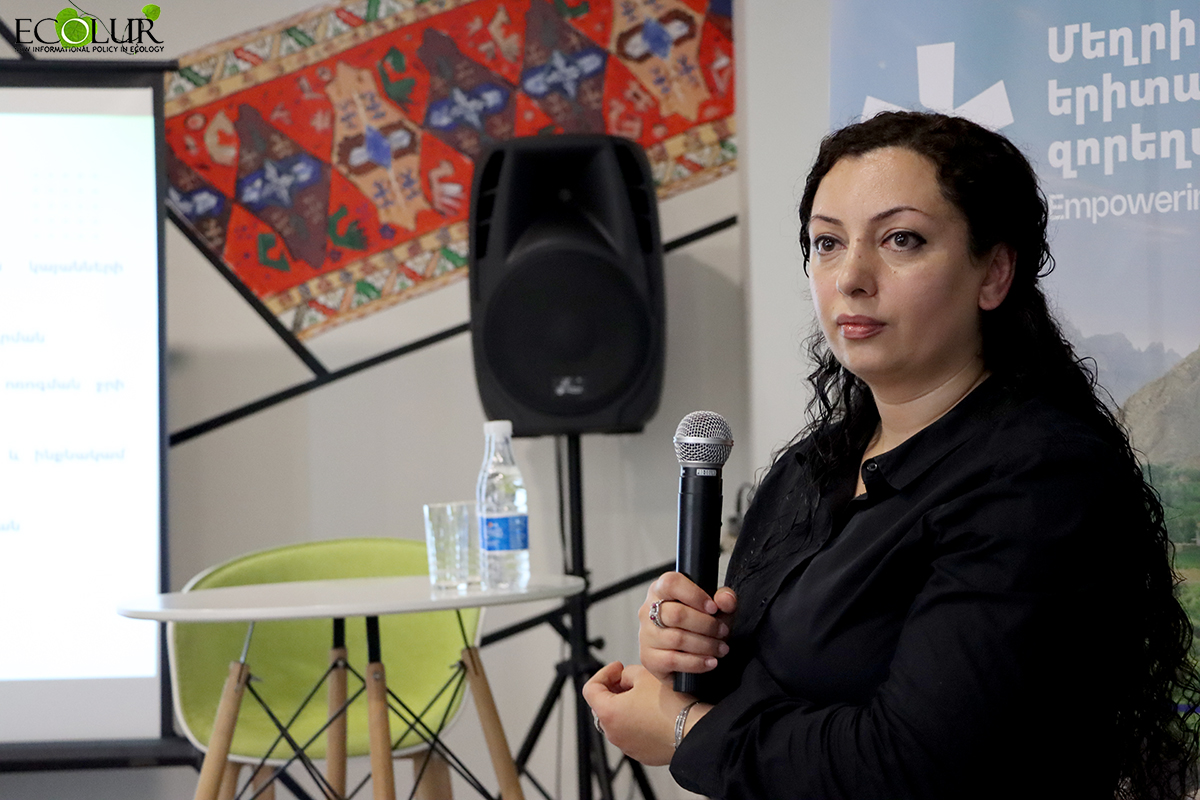

In October 2025, a regional consultation was held at “Loft Meghri” Youth Center in Syunik Region to assess community needs for implementing climate change mitigation and adaptation policies. The consultation brought together MPs, representatives of Meghri’s local self-government, the UN Development Programme, the Ministry of Environment, civil society organizations, experts, and youth.
The aim of the consultation was to raise awareness about Armenia’s national climate commitments—particularly the implementation of the 2021–2030 Nationally Determined Contributions (NDCs)—as well as to collect information from local authorities, civil society, and youth on climate challenges, needs, and opportunities for response, and to facilitate dialogue with Members of Parliament.

The consultation was held within the framework of UNDP’s “Fostering the Response Capacity, Effectiveness, Transparency, and Inclusiveness of the National Assembly of the Republic of Armenia” (FORSETI) project. The project is implemented with financial support from the Governments of Sweden and Canada, in cooperation with the National Assembly of Armenia.
Meghri Community is facing a number of climate-related challenges, including rising air temperatures, drought, strong winds, frost in mountainous areas, forest fires, water scarcity, as well as spring floods and landslides in higher-altitude and mountainous zones.
An assessment of Meghri’s climate challenges, pathways for enhancing resilience and localizing climate actions, as well as the climate-related legislative framework, was presented by Victoria Burnazyan, Deputy President of “EcoLur” Informational NGO.

In particular, she noted that, for the implementation of the Nationally Determined Contributions (NDC 2.0), it is necessary to provide support for the involvement of local communities, taking into account the needs of youth and vulnerable groups.
In the National Adaptation Plan adopted in 2021, communities play a key role. A draft adaptation programme has been developed for Syunik Region. According to Victoria Burnazian, however, no targeted measures have been designed specifically for the community. The limitations of local financial mechanisms hinder the implementation of community initiatives, leaving communities largely dependent on government support.

New responsibilities are envisaged for local self-governments (LSGs) in the draft law “On Climate.” Communities receive several important functions related to the classification and recording of past and future expenses in their budgets tied to mitigation, adaptation, and loss-and-damage measures—on a voluntary basis.
Victoria Burnazian emphasized that:
-
LSG representatives must be included in the Climate Council with voting rights in decision-making.
-
State support guarantees must be ensured for communities most vulnerable to climate impacts.
-
Communities can use the Guide developed by EcoLur NGO with UNDP’s “Climate Promise” support, which helps LSGs integrate national mitigation and adaptation policies at the local level. The Guide is available on the official website of the Ministry of Territorial Administration and Infrastructure.

Within the programme, community needs were assessed through surveys conducted with the support of Meghri Municipality:
• capacity development for LSGs
• support for climate risk assessment and the development of adaptation and mitigation action plans
• provision of financial support
• introduction of a climate-budget-tagging mechanism within the municipal budgeting system
Organization of awareness-raising activities to localize sectoral policies:
• installation of early warning systems for climate-related disasters such as floods, mudflows, and rockfalls
• involvement of youth and women in climate policy
• support for creating a reliable climate data system for planning community-level adaptation and mitigation actions
• soil studies and land degradation neutrality programmes
• incentive tools for farmers and agricultural enterprises adopting drip irrigation and modern irrigation systems
• integrated programmes for preventing crop diseases
• installation of modern hail protection systems
• accessible agricultural insurance
• construction of geomembrane-lined reservoirs and small water-storage structures
• construction of community-owned solar power plants and expansion of solar water-heating networks
• installation of charging stations for electric transport
• introduction of water-saving technologies and improvement of drinking and irrigation water supply services
• improvement of municipal waste management and elimination of illegal dumpsites
• introduction of solid waste management practices
Proposed measures and incentive mechanisms
• introduction of incentive mechanisms for implementing climate-related subvention programmes
• legislative consolidation—through support from the National Assembly—of incentive mechanisms for agricultural enterprises and livestock cooperatives adopting drip or sprinkler irrigation systems
• implementation of awareness-raising activities on the localization of sectoral climate policies with the initiative and support of state institutions
• government support for constructing a community solar power plant in Meghri
• creation of an energy manager position within the municipal administration
November 20, 2025 at 11:15
